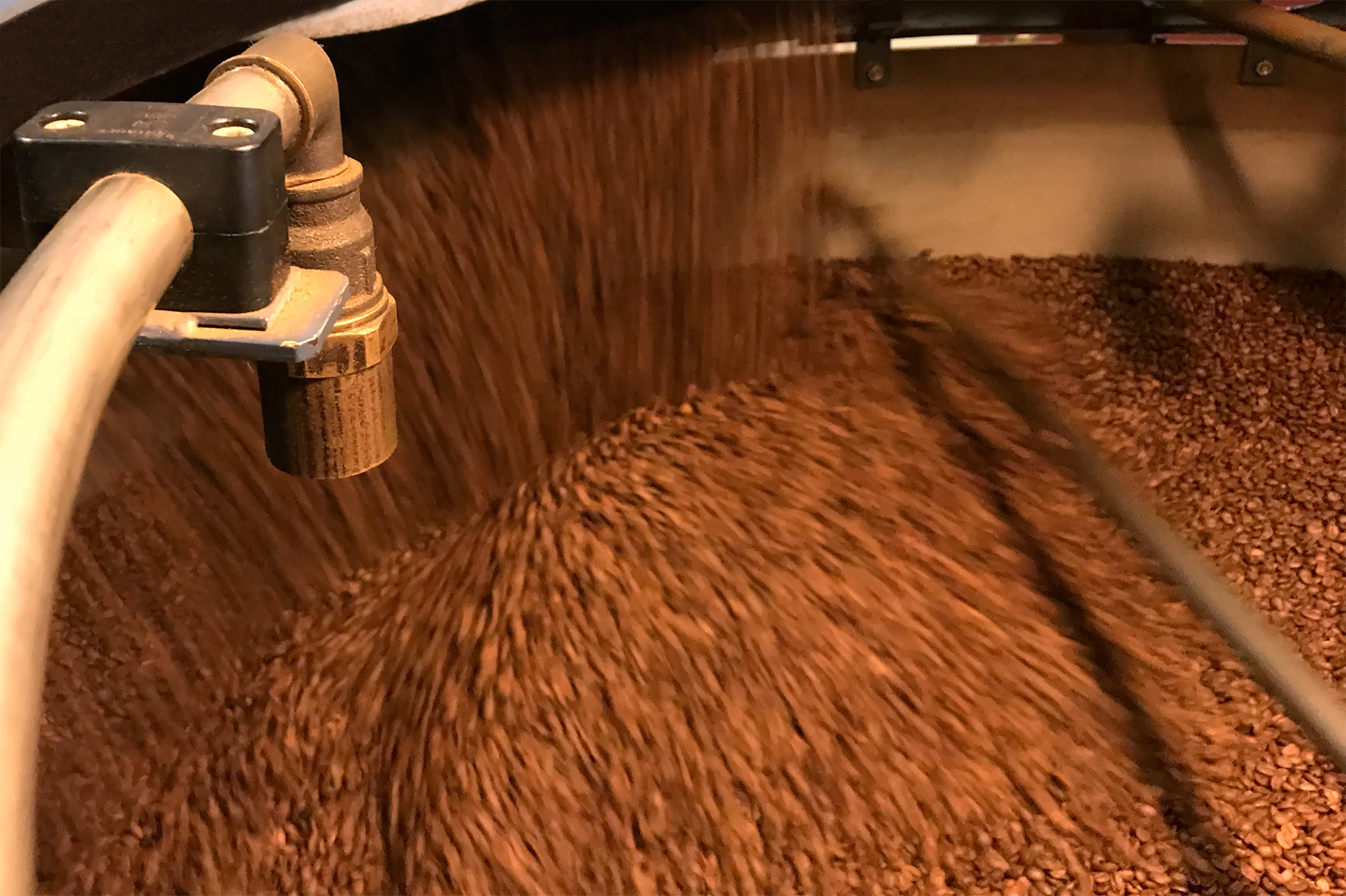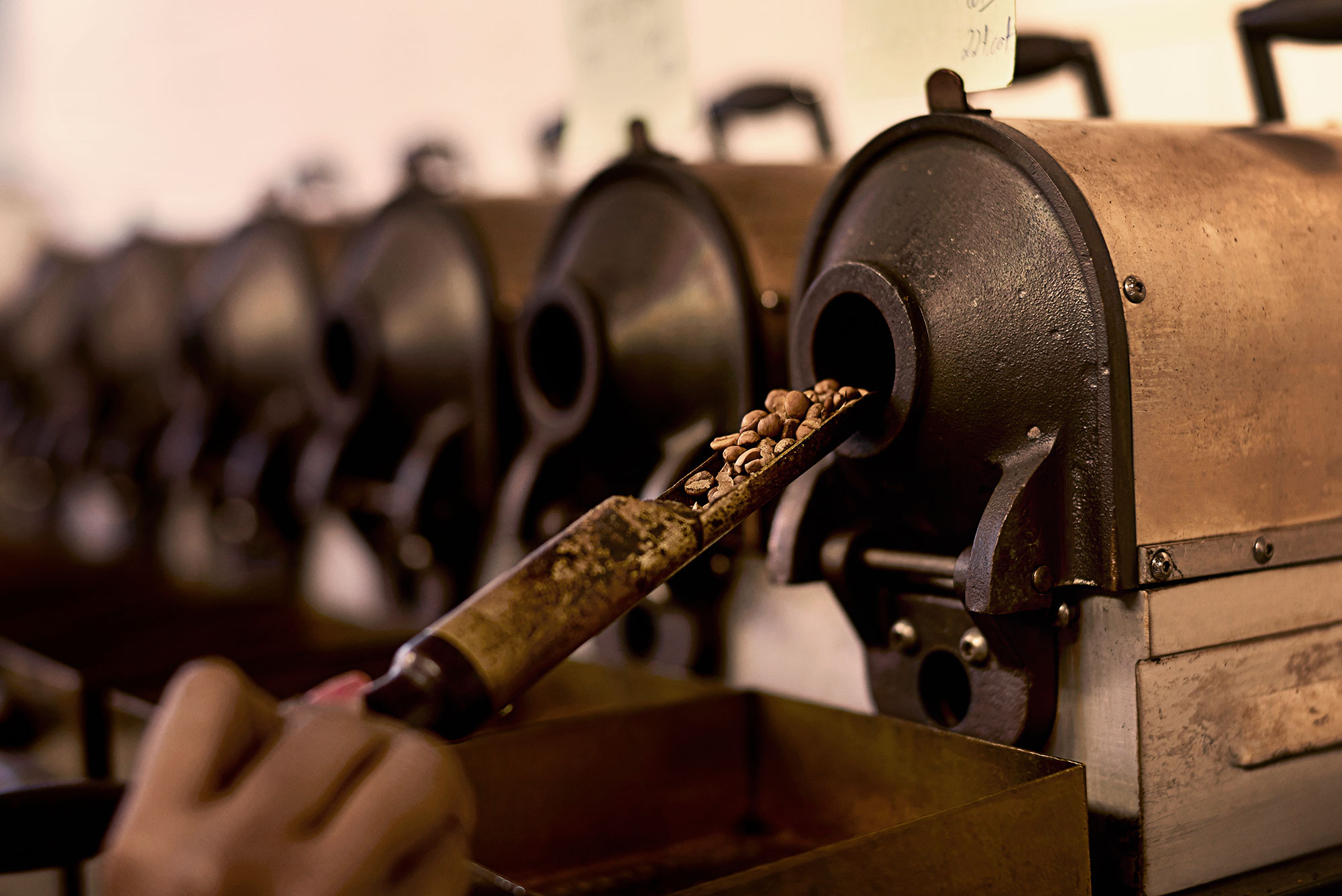THE ART OF ROASTING
Roasting is the briefest yet most important and painstaking stage in coffee production. This process carries a heavy weight of responsibility. Both time and money can be lost in a brief moment of carelessness, rendering the labour of hundreds of people on the fields and in the production process pointless.
The heat applied to the green coffee beans during roasting changes their colour from the original light green to brown. As the heat rises, the beans lose water. Before roasting, the green coffee beans have no aroma or fragrance; the roasting process uncovers over 900 aromas hidden in the beans.
Not every variety of coffee is roasted in the same manner. This is what makes roasting an art form. It requires experience, knowledge and expertise accumulated over many years. An experienced roaster knows the limits and potential of a given type of coffee. It is only through this skill and experience that the roaster is able to maximise the quality of the coffee.
While machines are used to roast, monitor and chart the coffee beans, experienced roasters still rely on their ears during the roasting process. The coffee roaster knows that the roasting process is almost complete when the beans begin to pop and “sing”. Afterwards, the beans are transferred to a cooling tank.
Kurukahveci Mehmet Efendi stresses the importance of the roasting process. Roasting requires perfectionism; there is no margin for error. The coffee roaster carefully conducts and orchestrates the specially designed roasting machines that maximise the quality and performance of the roasted coffee.
Stages
The roasting process takes anywhere from 2 and 20 minutes, depending on the technology of the roasting machine used. The temperature is gradually raised during the roasting process, which has many different effects on the coffee beans. In brief, these are:
The light green coffee beans are thrown into the roasting machines, which have been preheated to 200 to 250 degrees Celsius.
- At 100° C the beans change colour from green to yellow. The water in the beans begins to evaporate. They first exude a grassy smell, and then one of boiled vegetables.
- At 120–130° C the beans turn chestnut brown and begins to smell like toast.
- At 130–140° C the beans appear speckled, freckled and wrinkled.
- At 150–160° C the coffee beans give off a smell of roasted grains. This scent signals that the coffee is about to reach its true aroma.
- At 180° C, due to the high temperature, the beans begin to release the vapours trapped within them and the coffee reveals its true aroma. The beans turn a cinnamon colour and begin to expand.
- Above 180° C, the beans begin to darken and the coffee’s aroma grows stronger. The beans expand further and begin to pop. The surface of the beans begins to shine. As the beans continue to expand, their surface becomes smooth and their colour uniform.
- At 180–200° C the beans expand to three times their original circumference.
- At 210° C the cracking sounds can be heard again. The coffee beans’ colour and aroma are changing every few seconds.
- At this point, the coffee roaster stops the roasting process at the temperature of his or her choice, and the roasted beans are taken to a cooling tank.
- At 278° C the coffee beans cease to give off smoke or water vapour. The surface of the beans becomes dull and black. The beans will not expand any further.
- At 300° C the surface of the beans turns black and sooty. The beans crumble at the slightest pressure. The aroma totally disappears. At this stage the beans have been completely over-roasted and carbonised.
Between these extremes, experts agree that the optimal “roasting zone” is between 210–240° C.


